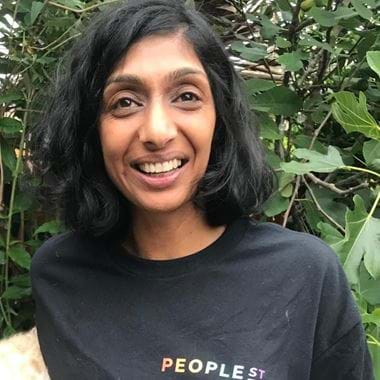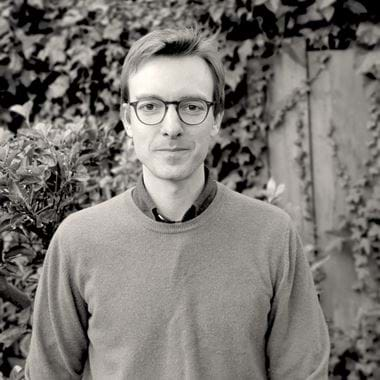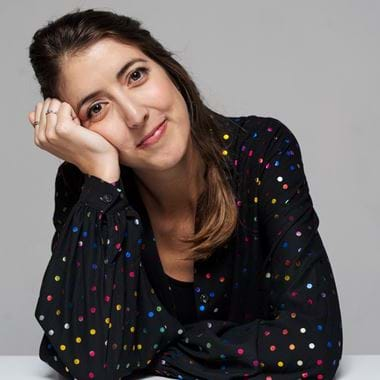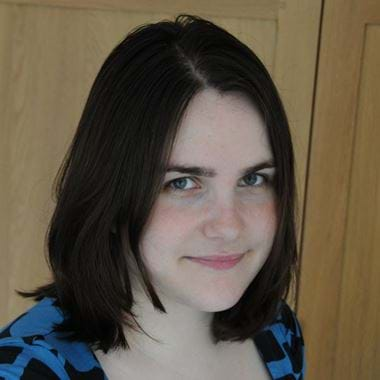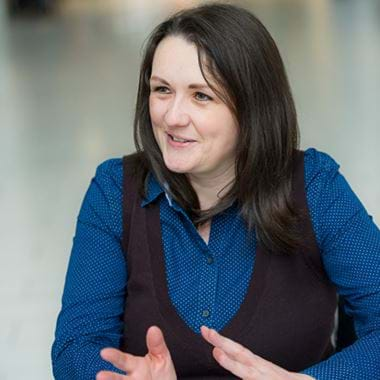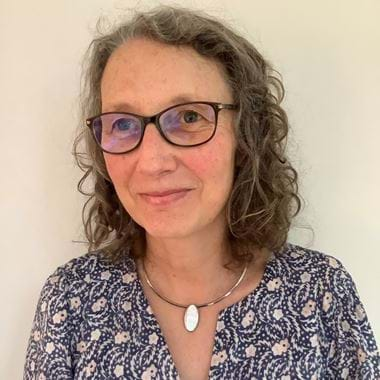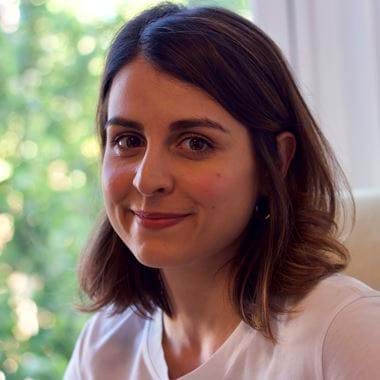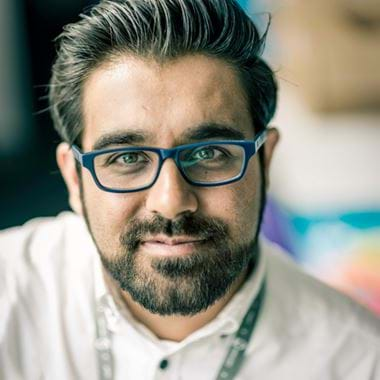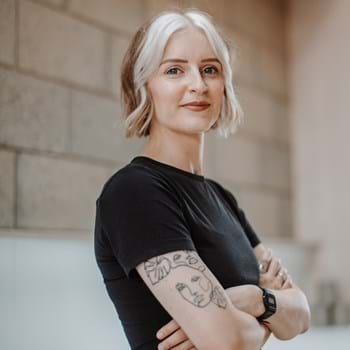
Natalie Pearce
@natjpearcenatjpearce on Twitter
Natalie is a Culture Designer, expert Facilitator and Co founder of The Future Kind Collective - a culture consultancy with the service design expertise to create kinder, fairer, better employee experiences for every stage of company growth. She loves putting people first, from developing (excellent) end-to-end employee experiences to crafting growth-proof team cultures.
When she's not strategising with her Partner in Purpose - her cofounder, Alicia - she likes designing engaging workshops and delivering killer keynotes. During her consultancy career, she's led projects for Insights, Amnesty International, BP, MasterCard, DVSA, Fidelity, HSBC, ITV and Pizza Hut. Find her on LinkedIn, Instagram, Medium and Twitter, where she talks about well-being, culture, leadership, the future of work and entrepreneurship
From CX to EX: Good culture needs good design
Great customer experiences don’t happen by chance. They happen by design. The same goes for great company cultures. This means using human-centred research to understand your employees, their needs and how to motivate them to bring the best of themselves to work. It means putting your values into practice by turning them into measurable behaviours and reinforcing rituals, because great employee experiences begin with liveable values.
It means using tried and tested design principles to create employee experiences that are just as amazing as your customer experience, through cleverly designed processes and systems that turn gaps into goals and deliver company-growing action. Want to find out what this means in practice?
In this talk Nat shares her story of going from CX to EX and how ALL designers can contribute to creating better workplaces by turning their skills internally.
Click here to view Natalie's slides.
So why am I so passionate about this? Well, we spend so much of our damn at work 90,000 hours I found on Google, there's loads of conflicting announced hours, I went with this one. That’s close to a third of our lives depending on how long you live. And what's more is that over a third of our lives is taken up by sleeping. So when we’re either sleeping, or working I don't know what we're doing for the rest of that time. I'll probably be sleeping as well. But wouldn't it be great if that third of our life if we were able to enjoy it more often? If it was fun more often? If it was empowering and inspiring more often? I truly believe that it should be seen as a human right to be respected, supported, and fulfilled and valued at work. And after all, we all want to work for great companies and within great cultures, right?
[crowd] Yes
Yes, I love the powerful yes there. I’d be that person in the crowd be that person, I love that
Now all of us who didn't know that great experiences don't happen by chance. They happen by design, right? We’re all agreed on this, I think, in this room today. Well the same is true about culture. Culture is no different. And so what I want to talk to you about today is the link between design and culture and crucially, how you can use all of your incredible skills to improve the culture that you're working in, whether you're a researcher, a service designer, graphic designer, developer, or anything else within the kind of digital digital spectrum.
But before I do that, how did I end up talking about culture and telling companies how to design their employee experience. I love this, this one is one of my favourite GIFS. I’ve never used this one before but this finding a moment to use this GIF, a life of joy. So I'm going to do something that I've never actually done in the talk before. I'm going to talk a bit about my career journey. And that started a million miles from the field that I'm in today. It started on a graduate scheme for a nationwide back. It started here. There I am fresh out of uni back in 2012. If you don't know which one I am. Look at the state of it people. What a bunch of.
We did this as a joke but honestly the joke is on us, it’s giving Apprentice and that we’re going to get voted out in the first episode that’s what that is giving. Wow. Now I'm gonna be honest with you. This actually has very little to do with the story I'm about to tell. I just found it quite funny. I remember this picture and was like I wonder where that picture is erm so I thought I’d bring it in and hopefully make you all laugh so I know but seriously if anyone is taking a photo of this and posting it on socials I’ll hunt you down.
Anyway the point is, there is a point, I didn’t start out in Design and I didn’t start out in Culture but thankfully through a stint in the bank's Digital Strategy Team. I ended up in the design team where I was responsible for the user experience of NatWest and RBS, banking App. So now I am there. This is me surrounded by post-its lying on fake grass because that was like the done thing back then. So we were like, yeah, let's get fake grass in office. Wild.
So this is where I learn everything I know about service design, design, thinking, user research, and I have to tell you that I just, I just fell in love with it. I knew I found something that I wanted to stick at. And I was like, I think I can be pretty good at this. And I guess what came before this which was a really long time being like, holy shit. I'm a terrible adult, like I can't do any jobs that I've ever done. So it was the first time I actually felt a connection to the work that I was doing. What I didn't love though, was the culture that I was working withhin. So I was part of an incredible small team. We support each other we had each other's back, but the culture as a whole in the bank at a time at the time. I didn't feel like I fitted into that. I didn't feel comfortable. I didn't go through anything. I mean, actually, there's probably a couple of stories, but that's another talk or talk to me later at networking. But I mean, it wasn't anything like massively dramatic. It just wasn't I just didn't feel like I belonged there.
Then came along what I call my proper design job. I was approached by a newly formed design agency called Spark with the dream of growing something amazing. So I jumped in headfirst. I was employee number three. And that's where I found something that I never felt before. I had a passion for my work and what I did, and a sense of belonging I found with people, and I can't tell you how wonderful that felt and I think it goes broader than just the workplace. So if I look back at my school experience, I didn't feel like I really fit in there. Sometimes within my family. I didn't feel like I always fit in. So finally having that moment where I was like, Whoa, I feel I feel like I belong here. I feel like these are my people. It was an incredible, incredible moment. And I was able to help grow this thing and we grew and we grew and grew and with more and more people that were all so different, had really different experiences. Different backgrounds, but we were connected over our shared values and kind of shared beliefs for what we wanted to see as the future of the business. So I became obsessed with making sure that everyone else that joined us had that same feeling of belonging that I did. So I started picking up internal projects like designing our onboarding approach, and I thought, well, I'll do this the same way as I do any of our client projects, and that's when it started to click for me that we could use design to improve our company culture, and to make our culture more tangible. And I was startled, honestly, I was like, wow, this is like stars aligned. Something amazing has happened for me. So when we became big enough as an organisation that we needed the leadership team, I knew it damn well clear that we needed the head of head of culture, and I made it even clearer that that person was me. Hi, you need this role, by the way I am that role. So luckily, I was very convincing on that occasion, yay me. So I kind of made up this role. I'm actually sure it existed, but at the time, it didn't exist to me. I was used to HR managers or HR business partners. I've never heard of the head of culture before, frankly, is becoming much more common to hear that as a title, which is shown how, how far we've come. So I was like this role. We haven't learned how a company had a traditional picture. It was I'm not doing any of that. I am going to use design to improve our culture, and to design our employee experience like that's it. And I did collaborate with parent company's HR team and it was incredible because they have such important skills, policy legal processes, and I had the design and the empathy and the user centred focus to make those two things come together. And so we use the exact same approach to designing services and products to design our internal experience. So we went out to our users, the employees, and we we discovered where were at. We use that information to define what is the problem that we're trying to solve and where do we want this to be? We then went broad again, and started to design solutions and ideas to the problems that we identified. In our culture. And then we started to develop plans and prototypes actually test things to solve the problems or meet the needs that we've identified. And if they worked, if we got good feedback, we embedded them into the business and made them stick. So we looked at all the moments that matter within the organisation and started to map them out, just like a customer journey, and we applied our human centred design skills to design everything from our hiring process. How we onboard people, our career framework, our values, our culture handbook, so that they went further than was on page, even our approach to well-being within the organisation. Basically everything that came up with as we were growing the company, we designed for it and the end result was a culture that made people say, we had a culture, the people wanted to be a part of so people would come to our interviews and say, I heard about your culture. I want to I want to join because of that and it continues to be something that the company is very proud of.
But here's the thing when you work in an agency where everyone is a consultant, obviously I was a consultant a designer, before I have the head of culture role, there is always a tension between the internal work and the climate that's coming in so I just got sick of being put on client projects that I didn't really love so much anymore. And I was like, I want to do culture initiatives full time. And that's part of the story of how the future came to be.
So this cute little pic is when Alyssa and I first bought the domain name for the future collective. And that was exactly a year before we finally left and started the thing. What's quite funny is that we got so drunk after this. We like we saw the, domain name as like one of the biggest milestones of the business because it's bear in mind this business wasn't even incorporated. Like there was nothing behind it. But we had the domain name. So absolutely hammered. And thankfully there's no pictures of that. so what have I learned from this journey?
I learned that human centred design skills are crucial to create great cultures. I've learned that everyone I mean everyone has the responsibility is responsible for culture, not just people teams and not just leadership teams. And finally, we all have the power to change the environment that we work in and to influence the cultures that we're working with. So these are the points that I want to focus on for the remainder of my talk.
So learning one now I just want to make it super clear that I'm not talking about displacing traditional HR love traditional HR and I already mentioned actually such an important role within an organisation and they tend to be skillsets that are focused in policy and rigour and process and legal. And I think it's unreasonable to expect the exact same people who have you taught them seems to suddenly pick up experience design to turn their hand on it without proper training and support and that's what a lot of companies are doing. I speak to HR managers all the time they're like, I've been doing this for 20 years, but I've never really done this like this culture stuff or this employee experiences or stuff. I don't know where to start. And it's making people feel like they're not good enough in their roles. And it's but actually I think it’s an unrealistic expectation. So what I want to see more on is HR professionals and designers working together. And I think that that crossover of skill sets and how we can teach each other different skill sets. That's where we create really engaging employee experiences that are supported by processes and policy and that's basically services I write, design the front stage customer experience. So it delights your users and that it's like for customers. But Let's all make let's also make sure that the backstage and behind the scenes, the systems processes, people support that incredible front stage experience. And that's exactly what we get when we bring HR and design together. So I don't know if you can see this out loud but this is a we call this are our moments that matter manual for our clients is actually much older than this. But it's like those key moments like delighted moments that you have within employee experience. Imagine if we looked at each of these moments and considered how we made them the best possible experience based on the needs of those who are impacted by them. And actually, our ambition was to delight and inspire them rather than just to manage these processes. Or even like what if our goal was to get our users or employees in this case to shout about how great this process was in is if basically we would be creating user generated content for an employer brand. Now there are so many great for HR doing this, but imagine how much further we could have gotten with HR and design together. So next time you spot a problem in your team, or you waste working consider how you can do this, even in a light touch way to resolve those problems.
Learning number two, everyone is responsible for culture. I learned this the hard way. So when I was head of culture at the agency, I really believe that I was like solely responsible for everybody joining their experience at work, which included their well-being by the way, I kind of lost my mind and that kind of costs, like I burned out pretty badly. And I would absorb the emotions and the experiences of those within the team and take it as like my responsibility to kind of deal with all of those and actually it wasn't actually I needed to ask for help. Actually, rather than you know, just pointing out problems and problems and problems I needed to collaborate to solve some of those problems if the people that needed it solving. And when we look at the definition of culture, culture is a social contract between a
group of people with a shared goal that defines how they will behave in order to be successful. Now social contract is something that's agreed upon through consensus. It's not something that you're told to agree to. It like involves your behaviours and how you act. So we have to do this as a shared activity. Rather than it being a kind of top down only activity.
And when we look at everything that goes into your culture, so we've got your purpose, your mission values, of course these can be set by leadership team with help from people team, but when you look at the elements that actually create your culture, behaviours, interactions, rituals, and how we gather, how we get together, how we collaborate, even our processes or our workflows, we can't be told all of those things. We all have a responsibility we control our behaviours, right so and how we interact. So if we want to serve culture, I think the more that is a shared responsibility, the more likely we are to realise that culture and actually experience it. And so my final learning, we all have the power to change the environment that we work in. So I wanted to bring in a quote from my friend Lauren, who said, she actually said to me before, when trying to get me to stay in my lane [laugh] , she said we spend far too much time and energy on the things we can't control. Imagine how much your impact would shift if you focus solely within your circles of influence. So if we want to make change, we need to get clear on what our circles of influence are, and focus our time and energy and I find this such a powerful and empowering reminder to myself and I hope you find some of that as well.
And here's what I mean by this. So this is inspired by a Stephen Covey book, The Seven Habits of Highly Effective People and it's a way to compartmentalise different thoughts and areas of your life and prioritise your actions by what you can directly control and influence and that's where our energy is best spent. So let's bring this to life a little things that you can control we can control our actions, we can control our words, our choices, even designs that we decide to put in front of customers or our clients. And those things can influence the end user experience, and they can also influence the team dynamics and the culture that we create. But employers, governments, the economy, the weather, these will go in that third layer, they are out of control. And more often than not, there's something that we just we have to accept. So I find that when the world gets overwhelming, like often does, when we you know, try to create more inclusive experiences and cultures. I like to remember my circles of influence and kind of ground myself there. And here's the thing about our circle of influence. Small changes can have a big impact. I really love that book, Atomic habits by James clear. He talks about how if you get 1% better at something every day, you'll end up 37 times better by the time you're done at the end of that year, due to the power of compound interest. So small changes do matter. Small changes can make a big impact. And in the culture space, we often talk about what's our culture hacks that we could do to make a small incremental change within our team. So really, the point I wanted to kind of make with this talk is Be the change that you want to see. But more specifically, I would love for us all to try to be the culture that you want to see and see how that impacts our experience. At work. That's my last point, I’ve done a lot quicker.
[Applause]
Thank you so much for listening I really do I really hope that you're inspired to use your skills to improve your ways of working with clients or with the teams that you work in? And just lastly, if you did want to connect and you wanted to chat, I hang out on LinkedIn a lot. I'd love to meet you there and meet you later as well. I mean, these are our Instagram articles on our website. We've recently relaunched our website, it's coming if I do say so myself. Check it out. I’d love your feedback.
